What's New
Displaying results 3331 - 3340 of 4052

Resource | Presentations,
Purpose:
• Estimate costs of a comprehensive national response to HIV & AIDS
• Typically used to cost national strategic plans or national programs
• Time horizon: 5-6 years, although has been used for longer

Resource | Presentations,
Presentation on The Global Fund and Costing HIV Responses in Asia, 28 October 2010
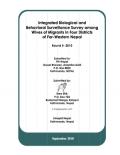
Resource | Publications,
This report presents the findings from the second round of the Integrated Biological and Behavioral Surveillance Survey (IBBS) among the wives of migrant laborers in Achham, Doti, Kanchanpur, and Kailali districts of Far-West Nepal. This survey collected data from 600 spouses of those migrant laborers who temporarily migrate or have migrated to India to work as laborers.
The survey measured the prevalence of HIV among the study population. It also looked at multiple factors associated with risks for HIV infection; including condom use; sexual behavior; knowledge of HIV/AIDS and sexually transmitted infections (STIs); STI treatment history; exposure to HIV/AIDS awareness messages and programs; and alcohol/drug use habits.
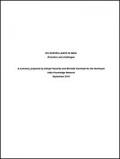
Resource | Publications,
HIV was first detected in India among female sex workers in Tamil Nadu in 1986. Over the last 25 years the epidemic has spread throughout the country, affecting a range of population groups and locations. It has been reported from all the Indian states and territories and currently an estimated 2.27 million people are living with HIV (PLHIV) in the country.
HIV prevalence in India varies by district, state and region, with numerous isolated pockets of high prevalence. The distribution of regions or pockets of high prevalence has also varied over the years. For instance, in 2000-2004, HIV prevalence in the southern states was estimated to be about five times higher that in northern states. Since then while HIV prevalence has stabilized or even decreased in the southern states, new areas have seen a rise in HIV prevalence particularly in the northern and eastern regions.
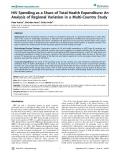
Resource | Fact Sheets,
HIV has devastated numerous countries in sub-Saharan Africa and is a dominant health force in many other parts of the world. Its undeniable importance is reflected in the establishment of Millennium Development Goal No. 6. Unprecedented amounts of funding have been committed and disbursed over the past two decades. Many have argued that this enormous influx of funding has been detrimental to building stronger health systems in recipient countries. This paper examines the funding share for HIV measured against the total funding for health.
The share of HIV spending across the 65 countries was quite moderate considering that the estimated share of deaths attributable to HIV stood at 3.8 percent and DALYs at 4.4 percent.
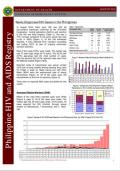
Resource | Fact Sheets,
In August 2010, there were 108 new HIV Ab seropositive individuals confirmed by the STD/AIDS Cooperative Central Laboratory (SACCL) and reported to the HIV and AIDS Registry (Table 1). This was a 77% increase compared to the same period last year (n=61 in 2009) [Figure 1]. Of the 108 individuals reported, four were detected from voluntary counseling and testing (VCT) as part of ongoing community outreach activities.
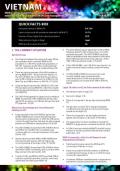
Resource | Reviews and Snapshots,
This Viet Nam MSM Country Snapshots provide specific information on HIV, men who have sex with men (MSM) and transgender people (TG) in Viet Nam.

Resource | Reviews and Snapshots,
Cambodia is internationally recognized for having successfully reduced its HIV prevalence among the general population from about 3% in 1997 to 0.7% in 2009. Sex work played a significant role in the spread of the HIV epidemic during the nineties. Since 1999, HIV prevalence has declined among direct and indirect sex workers, although levels remain high. The 100% condom use promotion strategy has been credited for having played a major role in the decline of HIV.
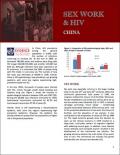
Resource | Reviews and Snapshots,
In China, HIV prevalence among the general population is 0.06%, with the number of infections continuing to increase. At the end of 2009, an estimated 740,000 adults and children were living with HIV (range 560,000‐920,000) and another 105,000 had AIDS. Although infections have been reported in all 31 provinces, it is estimated that 80% of people living with HIV reside in rural areas. The number of new HIV cases was estimated at 48,000 in 2009. Overall, China is still experiencing a low‐prevalence, yet growing epidemic, with some key regions experiencing high‐prevalence epidemics.






